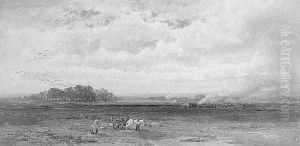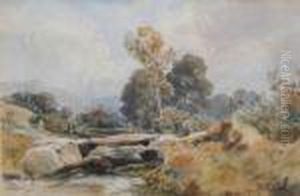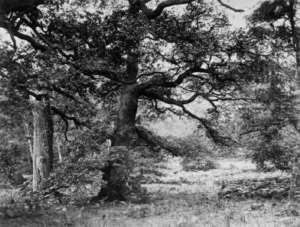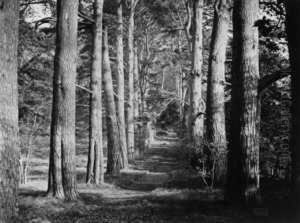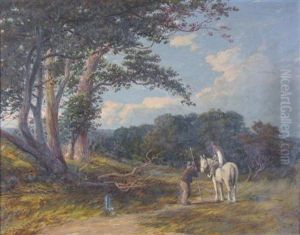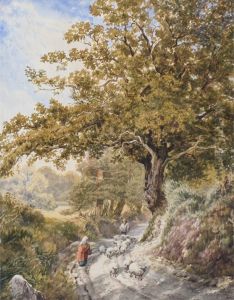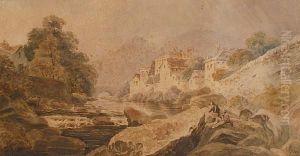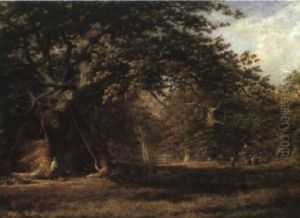Alfred Wilson Cox Paintings
Alfred Wilson Cox was an English artist known for his distinctive watercolors and oils, capturing landscapes, architectural subjects, and still lifes with a unique blend of precision and atmosphere. Born in 1911, Cox's early life was steeped in the cultural milieu of early 20th-century England, a period marked by significant artistic experimentation and transformation. Despite the lack of detailed records about his early education and training, Cox's work suggests a profound understanding of both classical and contemporary art movements, which he skillfully integrated into his own unique style.
Throughout his career, Cox exhibited a remarkable ability to evolve and adapt his techniques, reflective of the changing tastes and innovations of the art world. He was particularly adept at capturing the ephemeral qualities of light and shadow, imbuing his scenes with a sense of immediacy and intimacy. His landscapes, often depicting the English countryside, are celebrated for their serene beauty and meticulous detail, revealing Cox's deep appreciation for nature and his keen observational skills.
In addition to landscapes, Cox's architectural paintings stand as testaments to his fascination with the built environment. From historic buildings to contemporary structures, his work in this genre demonstrates an extraordinary precision and a profound respect for architectural integrity. His still lifes, though less frequently cited, are equally compelling, showcasing his versatility and his ability to imbue ordinary objects with a sense of significance and beauty.
Cox's contributions to the field of art were recognized with several exhibitions throughout his lifetime, both solo and collective. Despite the recognition he received, Cox maintained a modest profile, focusing on his artistic pursuits rather than seeking widespread fame. His dedication to his craft and his consistent output earned him a respected place among his contemporaries and in the annals of English art history.
Alfred Wilson Cox passed away in 1989, leaving behind a rich legacy of artistic achievement. His works continue to be admired and studied for their technical excellence and emotive power, securing his place as a significant figure in the landscape of 20th-century British art. His influence persists, inspiring new generations of artists to explore the nuances of light, texture, and form in their own creative endeavors.

